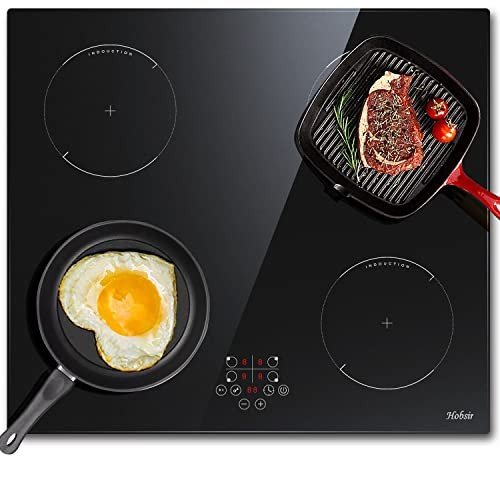Understanding Oven Hobs: The Heart of Culinary Crafting
In the realm of contemporary kitchen areas, the oven hob stands apart as an essential home appliance. Not just is it a central element for preparing a variety of meals, however it also affects kitchen looks, performance, and effectiveness. This article dives into the types of oven hobs, their functions, benefits, and maintenance ideas. Additionally, it deals with some regularly asked questions to provide a thorough understanding of this necessary kitchen device.
Kinds Of Oven Hobs
Oven hobs can be categorized into several types based on their energy source and style. Comprehending these variations can assist customers make informed decisions when choosing the perfect hob for their kitchen needs.
1. Gas Hobs
Gas hobs utilize natural gas or lp as fuel, offering precise temperature level control and instant heat. They are favored by lots of chefs for their ability to provide visual feedback through flame.
Pros:
- Quick heat-up time.
- Accurate temperature modifications.
- Suitable with all types of cookware.
Cons:
- Requires a consistent gas supply.
- Safety worry about open flames.
- Needs more upkeep.
2. Electric Hobs
Electric hobs are powered by electrical power and function smooth glass or ceramic surfaces. Fan Oven Sales can be found in 2 types: coil and strong.
Pros:
- Sleek appearance.
- No open flames, minimizing security dangers.
- Easy to clean.
Cons:
- Slower to warm up and cool down.
- May need specific pots and pans (induction).
- Some may have uneven heat circulation.
3. Induction Hobs
Induction hobs use electro-magnetic energy to straight heat up pots and pans. They only deal with ferromagnetic cookware.
Pros:
- Very energy-efficient.
- Fast heating & cooling times.
- Safe, as the surface area remains relatively cool.
Cons:
- Limited to particular types of pots and pans.
- Higher initial cost.
- Can produce sound when in usage.
4. Solid Plate Hobs
These electric hobs include strong metal plates that warm up and keep heat for cooking.
Pros:
- Durable and reputable.
- Straightforward operation.
Cons:
- Takes time to warm up.
- Less effective than induction and gas designs.
| Hob Type | Heat Source | Aesthetics | Maintenance |
|---|---|---|---|
| Gas Hobs | Gas | Traditional | Moderate |
| Electric Hobs | Electricity | Modern/Sleek | Low |
| Induction Hobs | Electro-magnetic | Contemporary | Low |
| Solid Plate Hobs | Electrical power | Classic | Average |
Features to Consider When Choosing an Oven Hob
When selecting the best oven hob for your kitchen, there are a number of important features to take into account. These include:
- Size: Ensure the hob fits the designated space in your kitchen.
- Number of Burners: Consider your cooking style and how lots of burners you'll need.
- Control Type: Look for user-friendly controls, whether touch-sensitive or knobs.
- Security Features: Many contemporary hobs consist of precaution like flame failure devices or kid locks.
- Energy Efficiency: Choose energy-efficient designs to save on energy bills and reduce your environmental impact.
Benefits of Using an Oven Hob
The oven hob supplies a number of advantages that accommodate both amateur cooks and expert chefs. Here are some crucial benefits:
- Versatility: Whether boiling, frying, simmering, or sautéing, an oven hob accommodates various cooking methods.
- Convenience: Many hobs included additional functions like timers and automatic shut-off systems for added benefit in hectic cooking areas.
- Enhanced Cooking Control: The instant heat responses of gas and induction hobs permit much better control over cooking temperatures.
- Style Enhancement: Modern hobs can boost the total aesthetic of a kitchen, including a contemporary touch.
Maintenance Tips for an Oven Hob
To ensure the durability and effectiveness of an oven hob, correct upkeep is vital. Here are some maintenance ideas:
Regular Cleaning:
- Use a soft fabric and moderate cleaning agent to clean surface areas after each usage.
- For induction and ceramic hobs, avoid abrasive cleaners to prevent scratching.
Check for Wear and Tear:
- Inspect rubber seals and connections in gas hobs regularly for any damages or leakages.
- Ensure electrical connections are secure in electric hobs.
Expert Servicing:
- Schedule regular maintenance checks with a certified technician to avoid major problems.
The oven hob is a vital part in any kitchen, functioning as a focal point for culinary ventures. Whether choosing gas, electric, or induction, comprehending the various types, functions, and maintenance requirements is necessary for making a knowledgeable decision. Ovens Online -chosen hob not only improves cooking efficiency however likewise improves the general kitchen experience.
Regularly Asked Questions (FAQs)
1. What type of hob is best for a newbie?
Electric hobs are often preferred by novices due to their ease of usage and upkeep.
2. Can I utilize all pots and pans on an induction hob?
No, induction hobs need ferromagnetic cookware for them to work appropriately.
3. How do I know if my gas hob is working efficiently?
Frequently check for even flame circulation and listen for any hissing sounds that might show leakages. If in doubt, seek advice from an expert.
4. Is a greater price constantly better for hobs?
Not necessarily. While higher-priced designs may use innovative functions, a number of mid-range products offer outstanding efficiency and longevity.
5. Can I set up a hob myself?
It is a good idea to work with an expert, especially for gas hobs, due to safety issues and local guidelines.
By understanding the nuances of oven hobs, home cooks can make a well-informed choice that aligns with their culinary aspirations and kitchen styles. Picking the right hob boosts both the cooking experience and kitchen visual appeals, making it an essential financial investment for any home.

